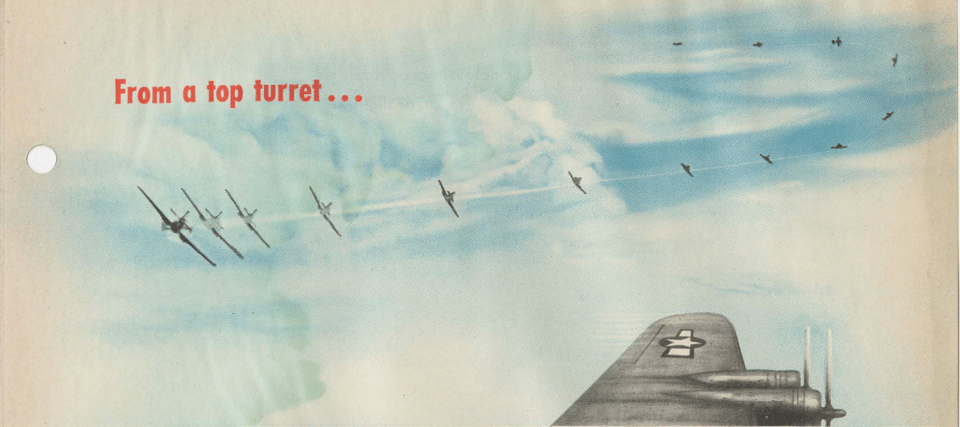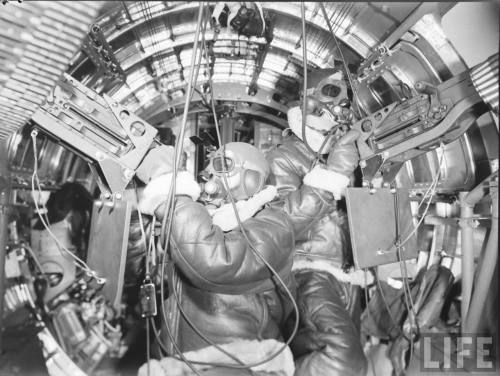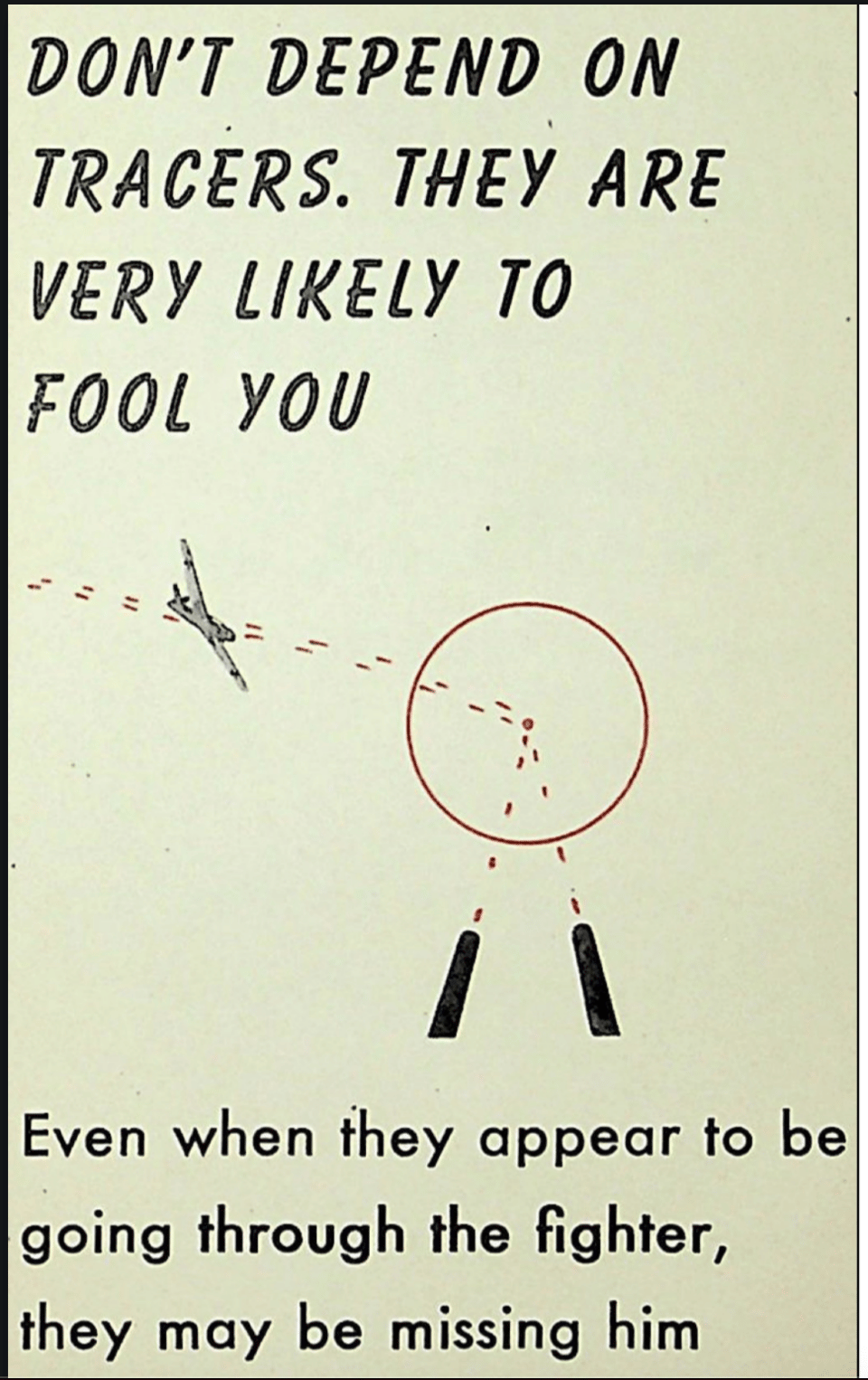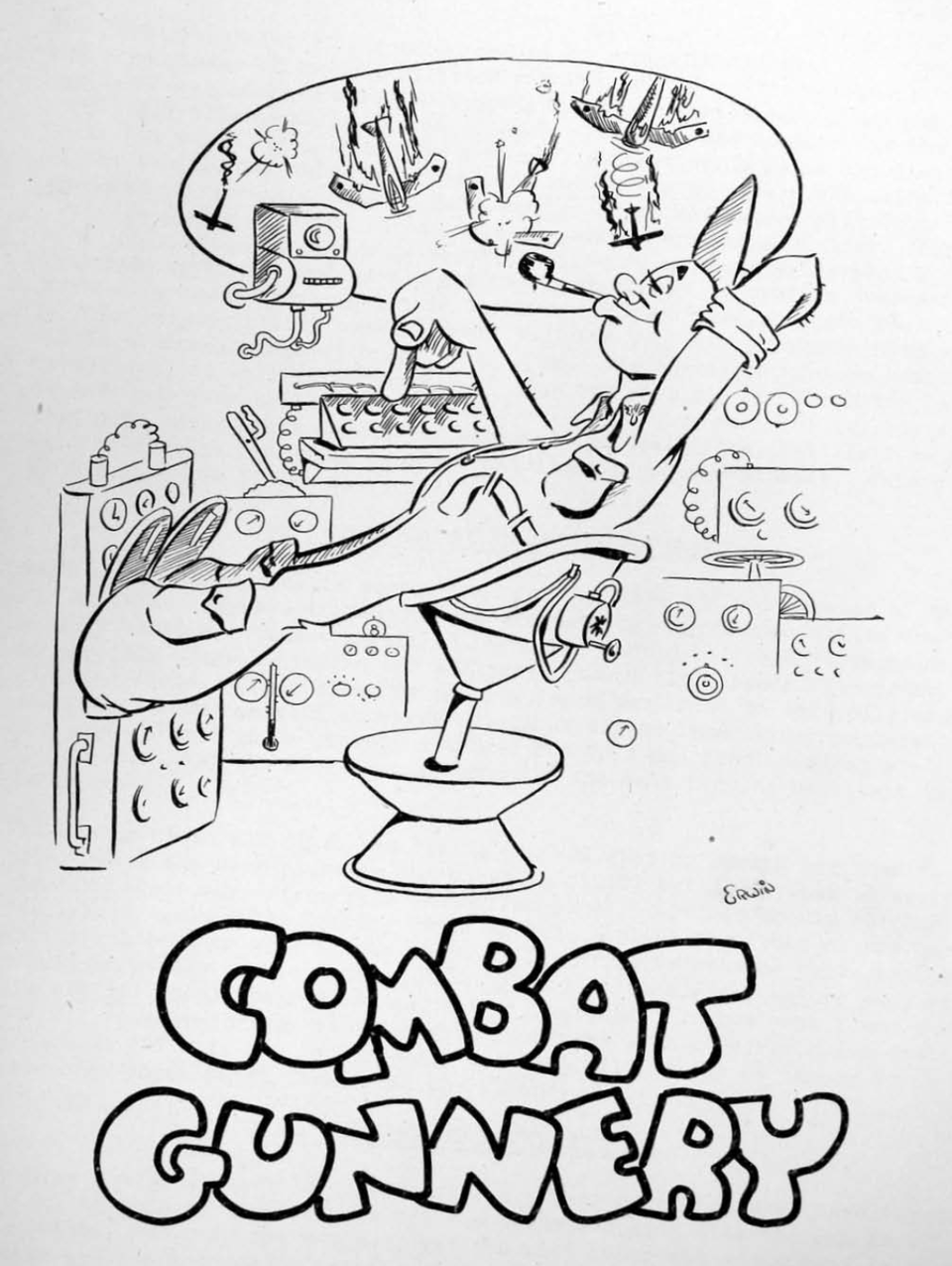Why WWII US Bombers Ditched Tracers
Why WWII US Bombers Ditched Tracers

When the US entered world war two tracers were a standard part of the ammunition belts in bomber machine guns. Yet by the end of the war US Bomber Command removed them from the mix.
Tracers were included for two reasons: to deter fighter pilots, and provide a visual indication for gunners. They failed to achieve either of these goals.
The reason they were removed has important lessons for developing cyber tools, techniques and procedures.

Fighter pilots were not deterred by tracers. By the time they began their attack they had already factored in that the bombers would be shooting at them. They expected it and committed to the attack regardless. There is even the chance that seeing how inaccurate the fire was bolstered their resolve.
However, there was a more pressing concern than the fighter pilot psychology. The real problem was that gunners would use the tracers, rather than their gun sights, to aim at the incoming aircraft. The gun sights were designed to allow offset shooting, that is, a method of calculating where to aim so that the bullets intersected the flight path of the target aircraft.

This might come as a surprise to many, but shooting an object traveling at 350 mph from a platform moving at 250 mph is quite difficult. Especially at distances of 500 to 800 meters (approximately one to two empire state buildings in freedom units.) There are many variables involved including distance, bullet drop, height, and so on.
The gun sights were designed to compensate for all these variables employing a system called "Position Shooting." Alternatively, tracers offered a very simple, very easy, very wrong, solution.

Position Firing
Shooting using the iron sights on a bomber involved a system called "position firing." This required placing one's head exactly 20 inches away from the sight, then aligning a circle on a 25 kg mass of steel, and a post on the end of a 4-foot (1200 mm) pole, with a 4 cm (1 inch) dot that was moving at three to four hundred miles per hour. There will be a test, it is life or death, and it is timed -- you have 3.5 seconds.
If you want to learn more, here’s a manual: https://digitalcollections.museumofflight.org/items/show/50156
The alternative was to simply aim the bright line of tracers at the target, which was easy but often . After a certain distance, the line appeared to bend suddenly due to the series of bullets losing momentum as the bomber flew away at 250 mph.

Tracers misled gunners about the actual trajectory of their bullets, as they appeared to follow a straight path for a few hundred meters before veering off to. Consequently, gunners neglected their sights, which were calibrated to deal with offset shooting and distance. To encourage proper aiming, tracers were removed.
Removing the tracers made sure that people didn't use a deceptively simple method which didn't work. But that wasn't enough to actually make the bomber gun crews effective.
Sure, one of the main sources of error was removed, but the technique for aiming correctly was still too complicated and error prone. The real solution was to remove all sources of error and make the only option simple to use and always correct.
Removing opportunities to make mistakes required fixing the gun sight system.

The B-29 had computerised gun sights that made the bomber a serious threat to attackers. The sight featured a simple interface connected to a computer that calculated a firing solution. Gunners no longer had to make any calculations on their own. Instead, they simply had to operate the gun sight which doubled as the interface to the computer.
The gunner only needed to adjust the gun sight reticle until an illuminated circle matched the wingspan of the target, which was done by turning a dial. The computer would then account for speed, atmospheric conditions, and adjust for deflection, bullet drop, and lead.
The manual can be found here:
- https://digitalcollections.museumofflight.org/items/show/46311
- https://archive.org/details/B-29CombatCrewManual
Bomber crews were able to use their equipment effectively because they had an intuitive system that automatically handled the complex deflection aiming calculations. With the computer gun sight, bombers no longer needed fighter escorts. They were capable of defending themselves against attacks.
Additional resources:
Training film to hit a moving target from a plane:
https://www.youtube.com/watch?v=DWYqu1Il9Ps
Training film for the computerized gun sight
https://www.youtube.com/watch?v=mJExsIp4yO8
YouTube video on the topic:
https://www.youtube.com/watch?v=5ot_d0aG844
https://www.ilovewwiiplanes.com/2021/01/21/cannons/
https://airandspace.si.edu/stories/editorial/defending-superbomber-b-29s-central-fire-control-system
Add a comment: